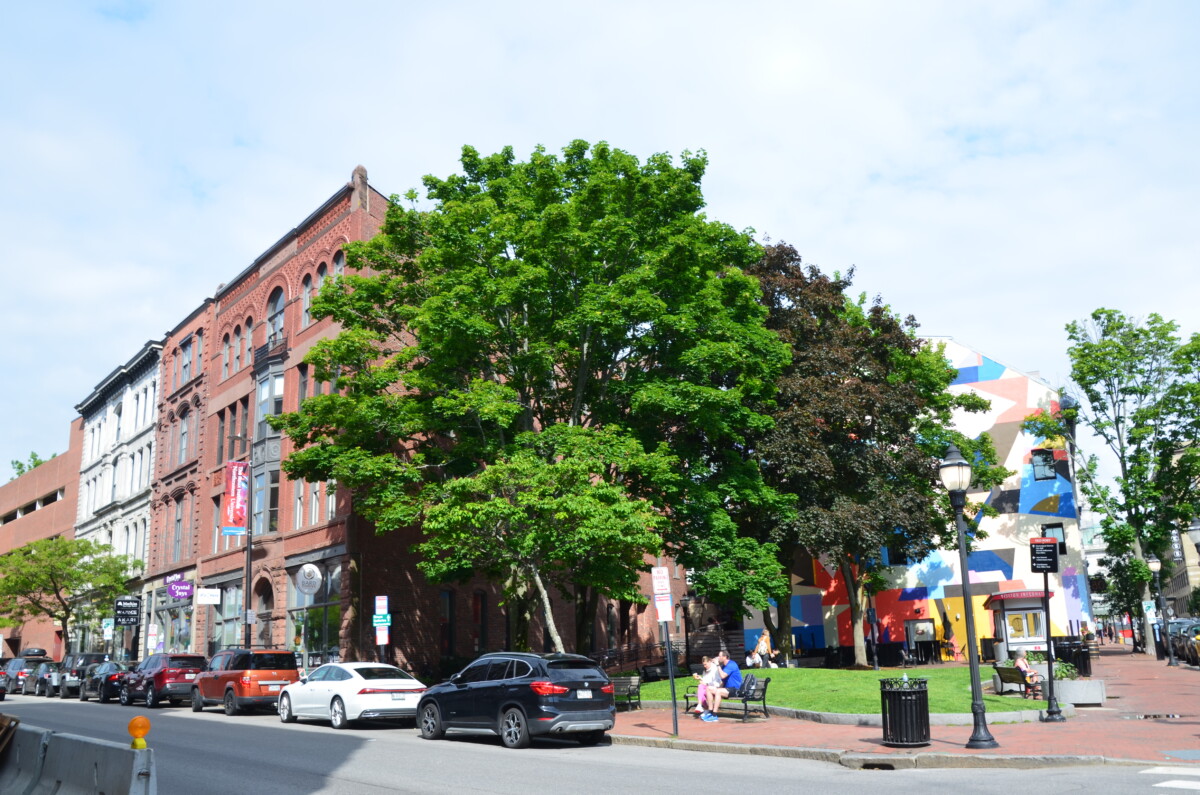Our trip to the Maritime Provinces of Canada was coming to a close and we had to drive back to Boston for our flight home. By rearranging the itinerary to explore Halifax, Peggy’s Cove, and Lunenburg, we didn’t think we’d spend any time in Portland, Maine.
However, we found a way to squeeze a bit of time there. By powering through a six-hour drive from Saint John, New Brunswick to Portland (after taking the 2.5-hour ferry from Nova Scotia), we arrived in Portland around midnight. This left the next morning to explore the city before heading to Boston.
Bay of Fundy Ferry
After touring Lunenburg, we drove two hours to Digby to board the MV Fundy Rose to Saint John. Digby, a cute small fishing village on the western side of Nova Scotia, boasts several lighthouses and a beach. We had just enough time to get a quick snack at a cafe before lining up for the ferry.
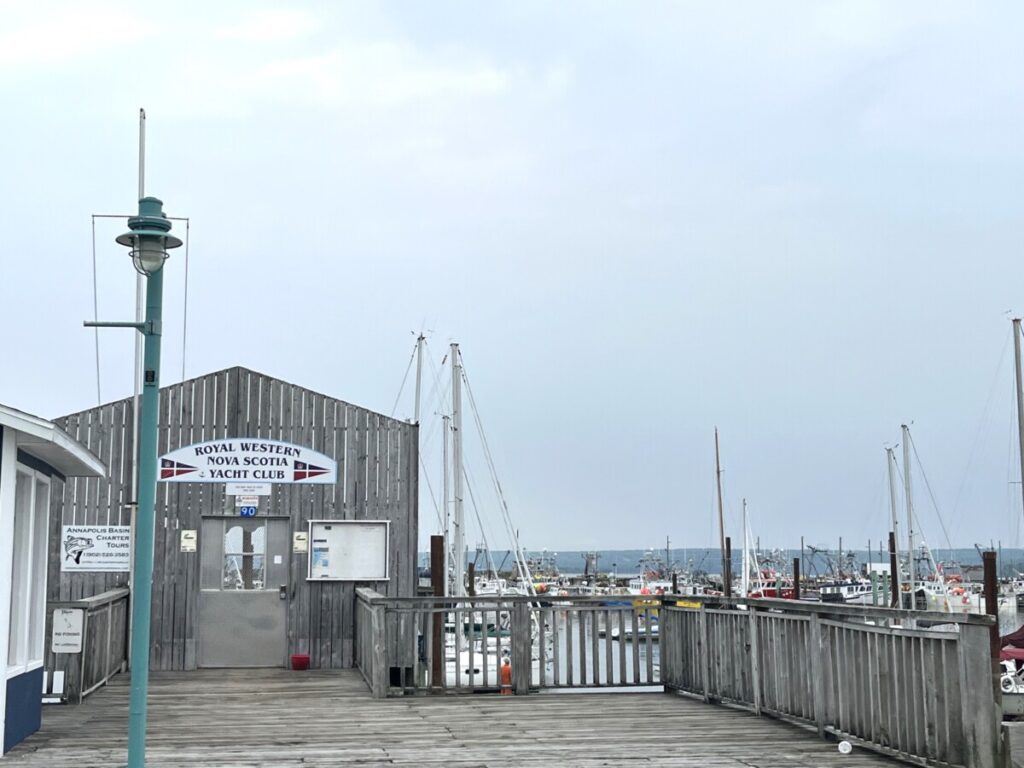
After boarding the ferry and parking the car, we headed upstairs to the top deck. I expected a small ferry with outdoor seats. Instead, the MV Fundy Rose is more like a cruise ship, accommodating over 200 cars and 1,300 passengers. We passed a movie lounge, TV lounge, several cafes, and a bar before settling in front of large glass windows at the bow. The trip went by quickly and we drove off with one single goal – get to Portland.
Downtown Portland
For our next morning in Portland, we planned to walk the Eastern Promenade. Unfortunately, access was limited due to the annual Shipyard Old Port Half-Marathon and 5K. Unless we sported race numbers, we couldn’t walk the promenade at that time. Instead, we walked around the charming downtown area.

Talk about a city reinventing itself multiple times! The town’s motto is “Resurgem,” which is Latin for I Shall Rise Again.” And rise again (many times, in fact), the city did.
The British settled the area in 1632, changing the name from Machigonne (Native American Indian for Great Neck) to Casco, and later to Falmouth. Tensions with the Native Americans ran high and the town was decimated during King Philip’s War in 1675.
After rebuilding into a busy port by the time of the Revolutionary War, Falmouth was targeted by the British in 1775. The Royal Navy shelled and set fire to the town, destroying 80% of the structures.

If that wasn’t enough, tragedy struck the town (renamed Portland) again in 1866. During one of the first July 4th celebrations, a fire quickly spread and burned down 1,200 residences and 600 buildings, including the City Hall and Customs House which many thought were fireproof.
With the aid of architects and workers from surrounding cities, the city “rose from the ashes” in a few short years. Instead of wood-framed buildings, the newly built commercial area featured red-brick Victorian-style structures still seen today. Portland beefed up the fire department with new stations, fireboats, and a better fire signal system and the city separated the residential district from downtown with the 2-acre Lincoln Park.
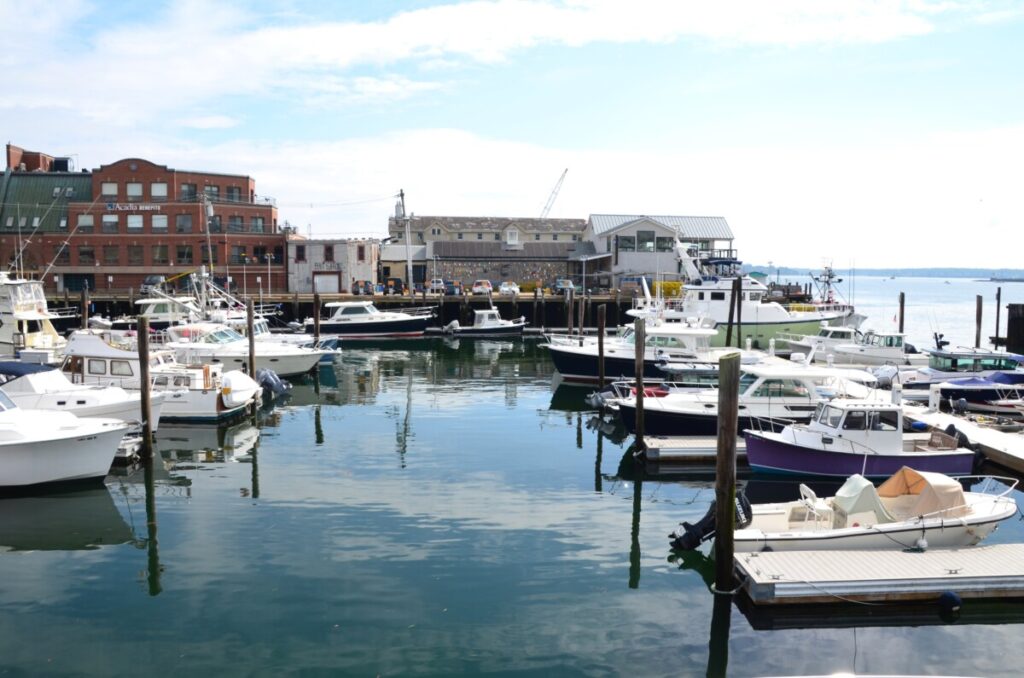
We also walked along Commercial Street near the waterfront. This area bustles with restaurants, shops, and the uber-popular Holy Donuts with a line out the door. Numerous wharves and piers, offering views of the harbor, run off of the street.
Eastern Promenade
On the drive back to the Eastern Promenade, we drove past many beautiful Portland residences. In 1905, the Olmstead Brothers designed the 68-acre park with a 2-mile multi-use trail affording views of Casco Bay. We parked near the boat launch at East End Beach and strolled along the waterfront toward downtown.
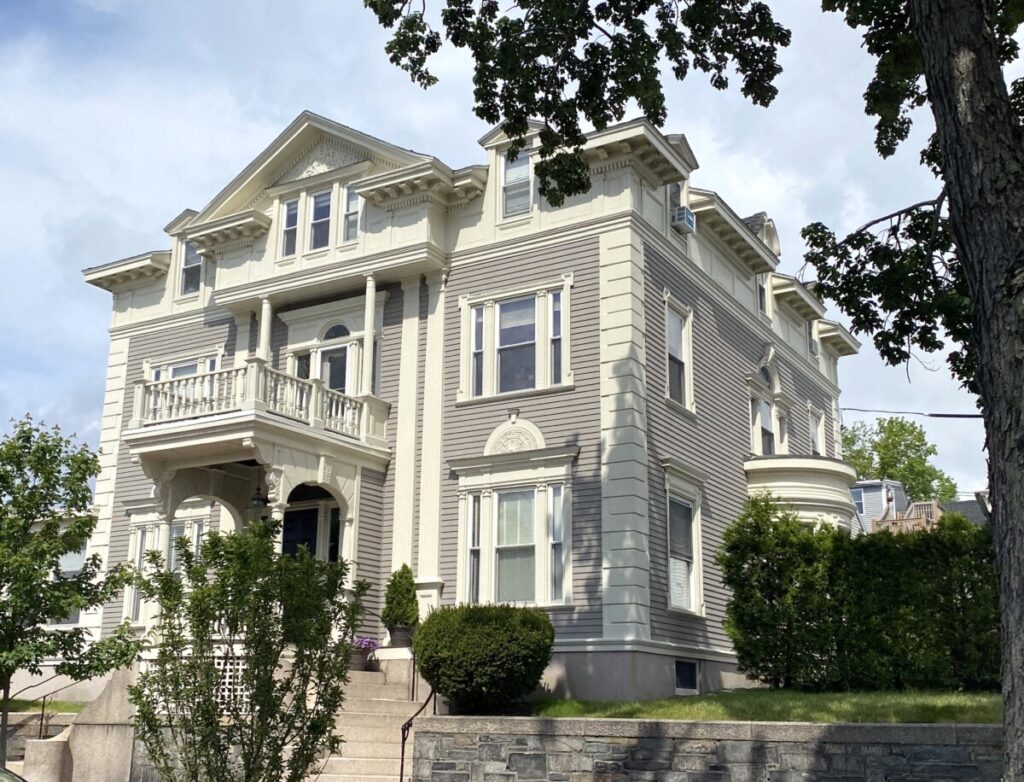
In the distance, amidst boating activity, the lighthouse at Halfway Rock stood proudly. Built around 1871, the 76-foot-tall lighthouse was manned until 1975. Isolation plagued the keepers who couldn’t bring their families due to the tight living conditions on the lower floors. A New York businessman purchased the lighthouse in 2014 and is restoring it in hopes of opening it to the public.

The Prom, as Portlanders call it, wound around grassy picnic spots and the Cousins Memorial. Before becoming a park, the land had been used for cattle grazing. Today, the park features two community gardens, several memorials, and courts for tennis, baseball, softball, and basketball. Around Fort Allen Park, we turned around so we could see one last thing in the Portland area.
Portland Head Light
We headed to Cape Elizabeth to see the Portland Head Light, the oldest lighthouse in the state. Constructed in 1791, the keepers of the stone lighthouse guided ships into the Portland Harbor. During its long history, the Strout family played a prominent role.
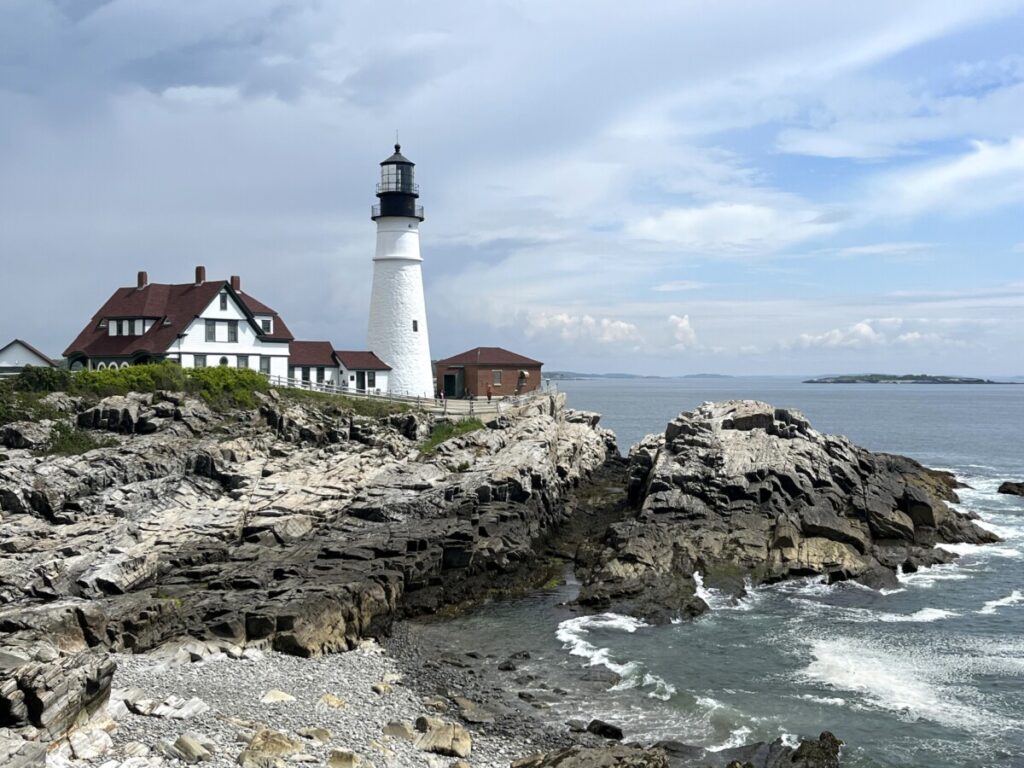
Jane Dyer Strout worked as a housekeeper during Joshua Freeman’s tenure as keeper in the 1820s. She named her first son, Joshua Freeman Strout after him. In 1869, Joshua Strout became the keeper for 34 years and his wife, Mary Strout, served as assistant keeper for seven years. Their son, Joseph Strout served as assistant keeper for 27 years until replacing his father as keeper in 1904. The younger Strout retired as keeper of the lighthouse 24 years later in 1928.
The waves crashed into the rocks below as we headed to the lighthouse. Closed to the public except on Maine Open Lighthouse Day, the tower rises 80 feet. However, the two-story lighthouse keeper’s residence, built in 1891, serves as a museum and gift shop during the summer months.
Conclusion
Portland provides many activities for a much longer visit. In addition to restaurants, shopping, and water activities, the city brims with historic homes and buildings, including the Portland Observatory. However, for a few hours, we got a small sample of some of what the city has to offer. For more information, visit the city’s website here.
